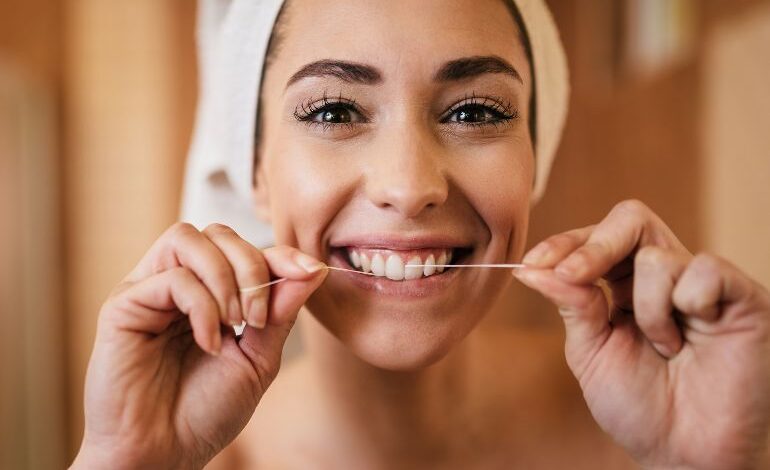Dental
Flossing Benefits & Tips from Montville Dentists

While brushing is thought to be the cornerstone of effective oral hygiene, your daily flossing routine can play an equally important role in maintaining excellent dental health. Knowing why flossing is a necessary part of your dental routine and being able to floss correctly can work wonders for the oral health of Montville, NJ residents. This post will detail the reasons you should be flossing, and then give a thorough, step-by-step guide by a family dentist in Montville, NJ to make sure you do it right.
Why Flossing is Necessary
- Prevents Plaque Build-Up: Plaque is a bacteria-covered sticky film that develops on your teeth and gums! When not properly cleaned it can solidify into what is called tartar, which can only be removed by seeing a dentist. Flossing takes out plaque in the areas your toothbrush can not get, such as between your teeth and under the gumline.
- Low Risk of Gum Disease: Periodontal disease (gum disease): This is characterized by an inflammation of the gums, also known as gingivitis. If these are not treated at their initial stages then it can result in more severe stages which eventually result in teeth loss. Flossing loosens food debris and plaque from the tiny pockets between your teeth where your toothbrush can’t reach, thus preventing gum disease.
- Prevents Cavities: Cavities, or tooth decay, often start to form in the crevices of your teeth where your toothbrush bristles are not able to clean. Flossing gets rid of all this plaque and lodged food debris from these cracks that toothbrush bristles just do not reach, thus minimizing the chances of cavities.
- Enhances Overall Health: Regular flossing has even been associated with better long-term health when it comes to one’s oral hygiene. Oral health is even closely linked to other systemic issues, including heart disease, diabetes, and respiratory issues. Good oral hygiene can help in reducing the danger of those health problems.

Step-by-Step Instructions on the Correct Way to Floss
- Choose the Right Floss: There are several different types including waxed, unwaxed, flavored dental floss, and dental tape. The floss that works best for you should be comfortable and meet your dental needs.
- Use the Right Amount: Cut off about 18 inches of floss. It is long enough so that you can use a different part of this amount each time and thus not spread bacteria over the teeth.
- Hold the Floss Correctly: Tightly grasp the floss with your thumbs and forefingers. Rubbing it between your teeth can help you move it gently. To prevent harm, avoid snapping the floss into the gums.
- Guide the Floss: Grasp the floss firmly between your thumbs and first fingers. Brush between teeth with care using a gentle back-and-forth action. Be careful not to snap the floss into your gums; doing so could cause harm.
- Form a C-Shape: Curve the floss around the tooth into a C-shape when it hits the gumline. Carefully insert it into the space of the gum and tooth.
- Clean the Sides of the Teeth: Steady the floss gently so it doesn’t snap down and cut into your gums. Floss the side of the tooth by moving it away from the gum with an up-and-down motion. Repeat this procedure on the opposite side of the spaces to place the floss around a neighboring tooth.





